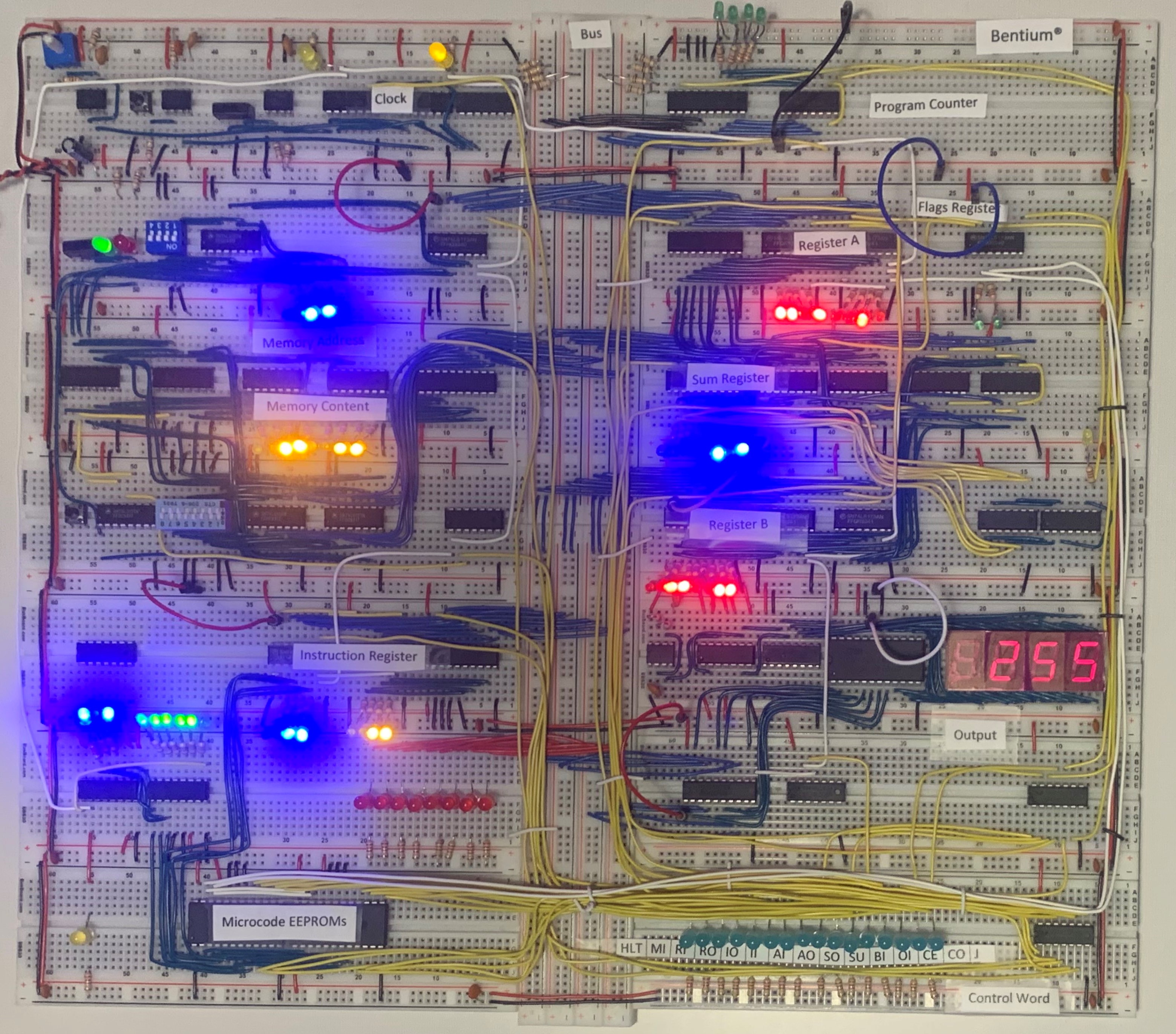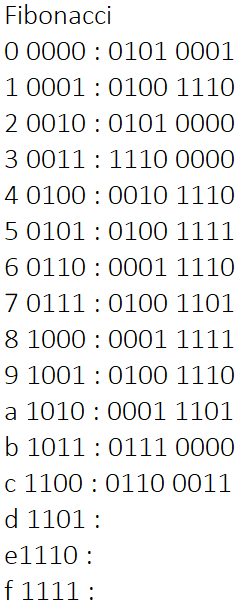A build of Ben Eater’s 8 Bit Breadboard computer that I call the Bentium. All logic done through TTL chips on a breadboard.
function
A fully functioning “computer” with 8 whole bits of data and 16 address of RAM! The computer can be programmed by directly changing the bits in the RAM using a dip switch. The most complicated program I’ve been able to run on it was a fibonacci program that only went up to 233 because of only having 8 bits. Machine code to run it is at the bottom, although I forgot to label it with the assembly equivalent so it’s not very informational.
what i learned
- Digital design fundamentals.
- Computer architecture.
- Hands on experience with working with TTL chips.
resources
notes
I started this project before I took my first digital logic class as a means to dive head first into the field. I was really interested in learning about how basic logic gates can be combined and eventually turned into a whole computer. I self studied digital design fundamentals a lot through Neso academy and when I felt I had good footing in it, I went ahead and went through a bunch of Ben Eater’s videos. I was hooked. Summer came around and I started building it, but overtime I’ve realized that I’ve learnd all I can from watching his videos and that continuing on building the computer had diminishing returns. I took a break from it because of that and the semester had just started. I only recently (Dec 2020) finished it after the semester.
My future goal is to dive even deeper into this and implement my own processor using VHDL and hopefully have a working build on an FPGA.
images
Bentium

Fibonacci
